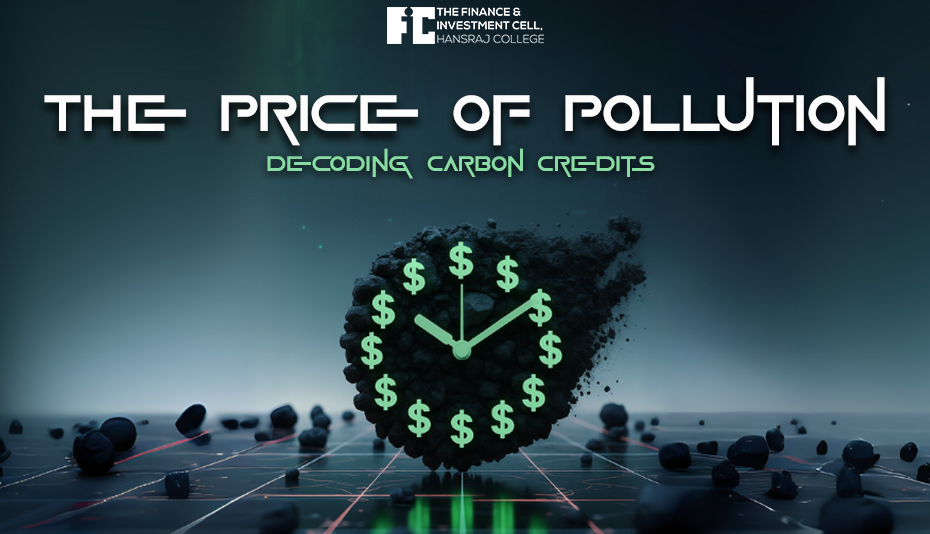Economic Bubble - A Brief History of Dizzying Climbs and Sudden Collapses
- FIC Hansraj

- Aug 18, 2021
- 4 min read
Updated: Aug 31, 2021
~ By Muskaan Jindal
How much would you shell out for a bouquet of tulips? A few dollars? A hundred dollars? How about a million dollars? Probably not.
Well, how much would you pay for a house or partial ownership of a website that delivers groceries? At separate stages in time, tulips, real estate, and stocks in webvan.com have all sold for much more than they were worth. In each case, the price escalated to a high and then abruptly tumbled. Economists call this a bubble.

An economic bubble is defined as a market phenomenon portrayed by surges in asset prices to levels significantly above the intrinsic value of that asset.
In the stock market, the price of a stock is based on the demand and supply of investors. Stock prices rise when it seems like a company will earn more in the future. Investors then might buy more of the stock, elevating the prices even further due to increased demand. This can result in a loop where investors get caught up in the hype and eventually drive up prices far above the fundamental value, thus, creating a bubble. All that is needed for a bubble to burst is the mutual realization that the price of the stock surpasses its worth. The demand ends abruptly; prices are pushed to staggering lows, the bubbles burst, and the market crashes.
STAGES OF AN ECONOMIC BUBBLE
Economist Hyman P. Minsky, in his book Stabilizing an Unstable Economy (1986)
outlined the following stages of a bubble:
Displacement: A displacement occurs when investors get captivated by a new paradigm, such as a ground-breaking new technology or historically low-interest rates.
Boom: Prices rise slowly, gaining impetus as more and more partakers enter the market, setting the stage for the boom phase. The asset in question draws extensive media limelight. Fear of missing out on what could be a once-in-a-lifetime opportunity spurs more speculation, luring an intensifying number of participants into the fold.
Euphoria: Caution is thrown to the wind as asset prices go through the roof. Buyers become reckless, the “greater fool” theory that states the notion that there will always be a market of buyers willing to pay more regardless of the price-plays out everywhere.
Profit Taking: Smart investors begin heeding the warning signs and realize that the bubble is about to burst. They start selling positions to make profits.
Burst: It only takes a moderately minor incident to prick a bubble, but once it is pricked, the bubble cannot inflate again. Reality sets in and investors panic. Prices switch course and descend faster than they ascended. Investors face plunging values of their holdings and become willing to liquidate at any price. As supply overpowers demand, asset prices decline sharply.
TULIP MANIA: WHEN TULIPS COULD BUY YOU A HOUSE
Today one can buy several tulips for a few dollars. However, in 1637 Holland, one could buy any house on the street with a few tulips. Tulipmania was a period when tulips were newly introduced and bought in huge quantities by many people. The increased demand for the rare tulips caused their prices to skyrocket. They were sold at prices higher than a skilled worker's earnings. Everyone from the butcher to the banker was getting into the trade. But soon people started to realize that they had paid fortunes for only a flower and they started doubting whether this had been a wise investment. When in February of 1637, no one showed up for a flower auction in Haarlem, the flower market collapsed. The speculators who owned the futures tried to sell their investments in a frenzy, trying to minimize their losses, speeding up the price drop. It was the first major economic bubble.

However, it didn’t quite have the dent on the affluent Dutch economy that more recent financial bubbles have inflicted on society. Although it left many with crippling debt, it also made many precautious of speculative trading.
THE DOT-COM BUBBLE
A pertinent example of a bubble is the dot-com bubble of the late 1990s. Stocks in new exciting websites were akin to the tulips of the 17th century. It was a time when adding 'e-' or dot-com to a company name could drastically boost its share price, a time when investors were prepared to wager vast sums of money on young computer-savvy entrepreneurs with little more than an idea and a catchy company name.
Webvan.com was one such dot-com company that in less than three years burned through more than $800 million in cash, went public, filed for bankruptcy, and then ceased operations. The online grocery company went from being a $1.2bn company with 4500 employees to liquidating in under three years.
The bursting of the dot-com bubble was the opening act of the existing economic era, and the repercussions from its outcome are still felt worldwide.
CONCLUSION
One takeaway from the tulip mania and other economic bubbles is that prices are influenced by how much buyers are willing to pay. When buyers get stirred up about a product, they might not act reasonably about its price. This can make predicting and precluding bubbles challenging. Traders, economists, and bankers, all can get slightly fixated with identifying the next bubble, after all, the burst of the housing bubble in 2008 contributed to the worst financial crisis since the great depression. But, it is important to know that not all bubbles burst, sometimes price swings are just part of supply and demand and do not have spillover effects on other parts of the economy. However, it is equally important to recall past mistakes, and recognize that the potential to lose money by investing in a probable bubble still exists.







Comments